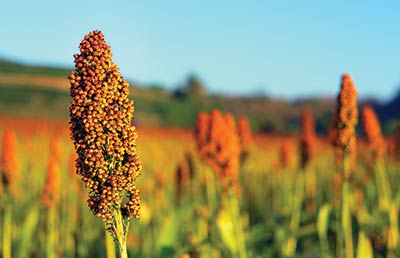Sell the Grain – Buy the Board

A reader sent us an email regarding hedging/speculation. A common scenario is a farmer will sell their crop since they either don’t have storage available or do not want to pay for storage and then “repurchase” the crop in the futures market.
This is fairly long comment from the reader, but we wanted to post it in full:
I have read your blog posts about hedging transactions vs. speculative transactions. However, I want to inquire on your thoughts on how “Re-ownership” strategies are taxed and if the IRS’s standpoint is wrong.
These are common strategies to use when:
- Space is not available and crop needs to be sold right out of the field.
- Farmer is bullish and believes price will rally.
- Basis may be strong and farmer wants to deliver grain but believes futures price may rally.
I wrote out a real-world example as of today.
Nov. 4 – I sell 50,000 bushels of soybeans, cumulative, right out of the fields this fall. (Assuming same cash price through the days of harvest for simplicity sake.)
Today: Cash price = $8.34 (Jan 2020 of $9.38 – $1.04 basis)
Revenue: $417,000
Re-owned the inventory by purchasing 10 contracts of March 2020 beans for $9.51 because I believe the soybean prices will rally, but I do not have the storage.
50,000 x 9.51 = $475,500 contract value
Jan 20 – Sold the 10 contracts because they did not rally after the Jan USDA report.
50,000 x 9.30 = $465,000
Net futures loss = ($10,500)
Net revenue for Soybeans = $417,000 – ($10,500) = $406,500
Net price per bu = $8.13
If I would have stored these beans in the bins until Jan 20 and sold on the cash market: (Assuming basis is the same as it was at harvest. Not likely to happen, but used for the examples sake.)
$50,000 x ($9.30 futures – $1.04 basis) = $413,000
Net price per bu = $8.26
The difference between my net prices is $0.13, which is the “carry” from the Jan 2020 contract of $9.38 to the March 2020 contract of $9.51.
I understand that the thought behind this transaction being “speculative” because I sold my physical inventory and bought it on the board “speculating” that the price will increase. I argue the fact that if I have unsold crop in the bin, I am speculating on a price increase as well. The only difference between the two is the carry I paid myself to store the beans for that time.
This is certainly a valid strategy for any farmer. However, under the tax laws, hedging is specifically related to hedging the risk of a “loss”. This strategy is the exact opposite, therefore, it does not qualify (at least currently) as a hedge.
This means that any resulting gain would be treated as ordinary income and any loss would be capital (i.e. technically not allowed to be reported on Schedule F or reduce SE income). Now, the regulations on hedging are decades old and perhaps the IRS may sometime update them to reflect allowing strategies such as this to be allowed, but until then, we are stuck with the worst of both tax worlds – ordinary income and capital loss.
Paul Neiffer is a certified public accountant and business advisor specializing in income taxation, accounting services, and succession planning for farmers and agribusiness processors. Paul is a principal with CliftonLarsonAllen in Walla Walla, Washington, as well as a regular speaker at national conferences and contributor at agweb.com. Raised on a farm in central Washington, he has been immersed in the ag industry his entire life, including the last 30 years professionally. Paul and his wife purchase an 180 acre ranch in 2016 and enjoy keeping it full of animals.

Wouldn’t the spec gains be treated as a capital gain – not “ordinary income? They would flow through Form 6781 and the net would be reported as 60% long term and 40% short term capital gains. Am I missing something here?